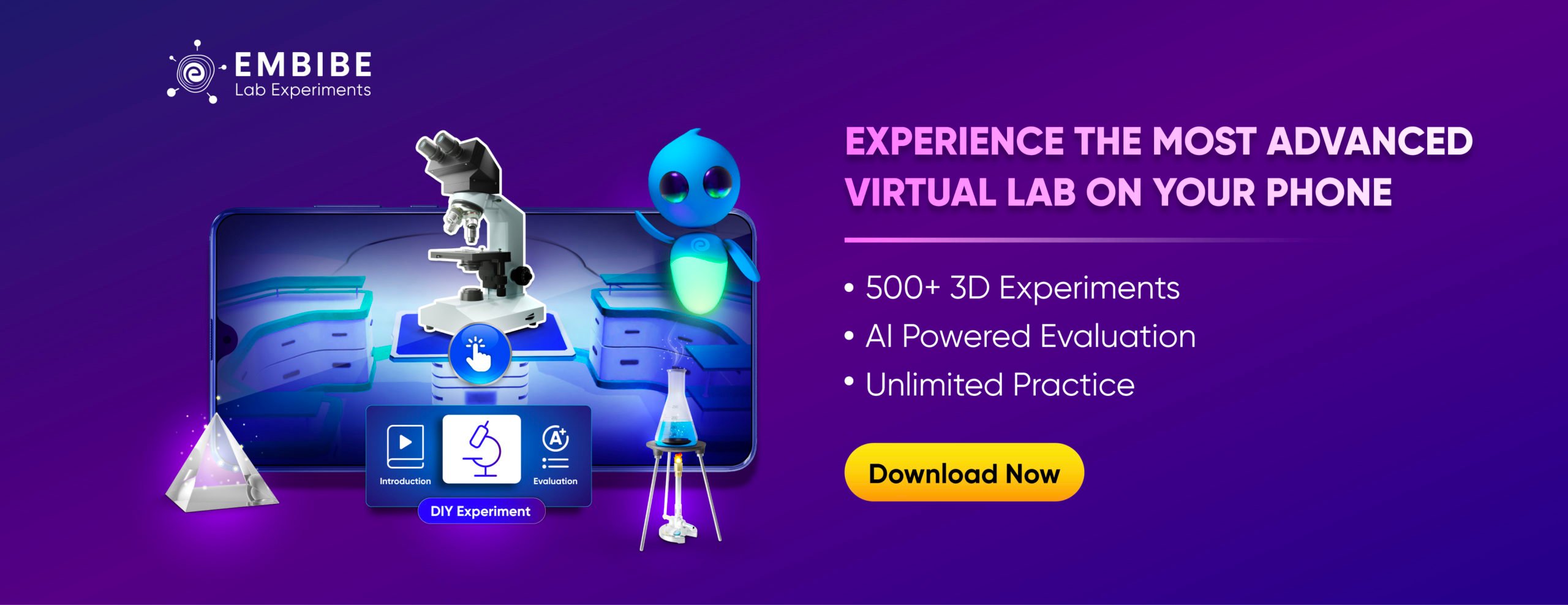- Written by Hrushikesh Vyas
- Last Modified on 4-05-2023
Tripura Board Class 12 Exam 2023
The Tripura Board of Secondary Education (TBSE) conducts the Class 12 (Higher Secondary) exams in the state of Tripura, India. Students who have completed Class 11 from schools affiliated with TBSE are eligible to appear for the Class 12 exams. The board exams are typically held in the months of March and April every year. The TBSE also declares the results for the Class 12 exams in the months of May or June.
Tripura Board issues the curriculum for the schools affiliated to it. Students can score maximum marks in the TBSE Class 12 board exam by studying from the prescribed syllabus. The minimum passing mark for the Tripura Board for the Class 12 exam is 30%. If a student fails in the regular board exam, he/she can appear for the supplementary exam, which is held nearly one month after the declaration fo the regular exam result. Continue reading to know more about TBSE Class 12 syllabus, important dates, preparation tips, exam pattern, and much more.

Tripura Board Class 12 Exam Summary 2023
The Tripura Class 12 Board exam is also known as Intermediate examination. The Class 12 board is conducted offline in pen-and-paper mode. Students in Class 12 have to register for the Board exam. The Tripura Board will issue admit card to all the registered students, to appear for the Class 12 exam. Every year, nearly 26000 students take the Tripura Board Class 12 exam. Before we provide students with more information about TBSE Class 12 exam, they should check the overview of the exam from the table below:
| Particulars |
Details |
| Exam Conducting Body |
Tripura Board of Secondary Education |
| Short Form |
TBSE |
| Exam Name |
Tripura Board Class 12 Examination |
| Frequency of Exam |
Once a Year |
| Exam Duration |
3 Hours and 15 Minutes |
| Official website |
tbse.tripura.gov.in |
Tripura Board Official Website Link
https://tbse.tripura.gov.in/
Tripura Board Class 12 Latest Updates 2023
- Tripura Board will release the Class 12 admit card on February 23 (11 AM to 4 PM).
- The Tripura Board Class 12 will be conducted from March 15 to April 19, 2023.
Tripura Board Class 12 Exam Pattern
When it comes to the Science stream, there are two options that the students can opt for: Physics, Chemistry and Biology (PCB) or Physics, Chemistry and Mathematics (PCM). In the Arts stream, one gets the option to choose from various humanities subjects like Geography, Psychology, Political Science, History, etc.
In the Commerce stream, students can opt from subjects like Economics, Business Studies, Accountancy, Entrepreneurship, etc. Keep in mind that, English and Hindi are two compulsory subjects that all students from these three streams must opt for and appear in the exam for.
The examination will be conducted for 100 marks for each subject, including 30 marks for practicals. The minimum passing marks that every student must get are 33.
Tripura Board 12th Exam Pattern Details – Scoring Pattern (+/- Marking)
- Every candidate appearing for the TBSE 12th Class exam needs to appear for 5 subjects.
- In the TBSE exam, each paper carries 100 marks and a duration of 3 hours is given to writing the exam.
- The candidates need to get at least 30% of marks in written and practical together to clear the TBSE 12th Class exams.
Tripura Board Class 12 marking scheme for some subjects are as follows:
| Subject |
Theory Marks |
Practical Marks / Internal Assessment |
Total Marks |
| Accountancy |
90 Marks |
10 Marks |
100 |
| Biology |
70 Marks |
30 Marks |
100 |
| Business Studies |
90 Marks |
10 Marks |
100 |
| Chemistry |
70 Marks |
30 Marks |
100 |
| Economics |
90 Marks |
10 Marks |
100 |
| English |
90 Marks |
10 Marks |
100 |
| Geography |
70 Marks |
30 Marks |
100 |
| History |
90 Marks |
30 Marks |
100 |
| Mathematics |
100 Marks |
– |
100 |
| Physics |
70 Marks |
30 Marks |
100 |
| Political science |
90 Marks |
10 Marks |
100 |
| Psychology |
70 Marks |
30 Marks |
100 |
Tripura Board Class 12 Exam Syllabus
Students should know their Tripura Board Class 12 syllabus for all the subjects. It is important to prevent wasting time on studying topics that are not in the syllabus. Knowing the syllabus will help students divided their time according to their study needs. Thus, students will be able to prepare the entire syllabus and be prepared to answer questions from any topic. The syllabus of a few key subjects is given below.
Tripura Board Class 12 Syllabus for English
Students should develop a strong base in English as it will help them comprehend other subjects easily. They will also be able to write answers properly and score maximum marks in the Board exam. The syllabus for Tripura Board Class 12 English is as follows:
| Section |
Details |
Marks |
| A |
Reading Comprehension
1. Section A will have two passages
A. One unseen passage with a variety of Objective Type Questions, including Multiple Choice questions and Short Answer Questions to test comprehension, interpretation, and inference. Vocabulary such as word formation and inference of meaning will also be tested.
The total length of the passages will be between 800 – 900 words. Five Multiple Choice type questions and Seven Objective Type Questions (total 12 Marks) shall be asked from this passage. The passage will include one of the following:
a) Factual passages, e.g., instructions, descriptions, reports.
b) Descriptive passages involving opinion, e.g., argumentative, persuasive, or interpretative text.
c) Literary passages, e.g., extract from fiction, drama, poetry, essay, or biography
B. The second passage will be 400-500 words. Note-making and Abstraction will be assessed.
i. Note making (4 Marks )
ii. Summary (4 Marks). |
20 |
| B |
Writing Skills
3. Advertisements and notices, designing or drafting posters, writing formal and informal invitations and replies. One question out of the two Short Answer Questions (4 Marks)
4. Letters based on verbal/visual input.- One question out of the two Long Answer Questions to be answered in 120-150 words (6 Marks)
Letter types include:
• Business or official letters (for making inquiries, registering complaints, asking for and giving information, placing orders, and sending replies)
• Letters to the editor (giving suggestions or opinion on issues of public interest) Application for a job
5 & 6. Two compositions based on visual and/or verbal Input may be descriptive or argumentative in nature such as an article/a debate/ a speech or a report- Two Very Long Answer Questions containing internal choice, to be answered in 150-200 words. ——-(10×2=20 Marks) |
30 |
| C |
Literature Textbooks
7. Eight Objective Type Questions – 4 from one poetry and 4 from one prose extract to test comprehension and appreciation. ——— 8×1=8 Marks
8. Five out of Seven Short Answer Questions based on prose/drama/poetry from both texts. 5×2=10 Marks
9. One out of two Long Answer Questions to be answered in 120-150 words to test global comprehension and extrapolation beyond the texts. (Flamingo) 6 Marks
10. One out of two Long Answer Questions to be answered in 120-150 words to test global comprehension along with analysis and extrapolation. (Vistas) 6 Marks |
30 |
Prescribed Books
1. Flamingo: English Reader
2. Vistas: Supplementary Reader |
Tripura Board Class 12 Syllabus for Mathematics
Students can score full marks in Tripura Board Class 12 Maths. They need to build a solid foundation in the chapter concepts first. Then they should solve sample problems and take mock tests to evaluate their conceptual understanding. The syllabus for Tripura Board Class 12 Maths is as follows:
| Unit |
Unit Name |
Details |
| I |
Relations and Functions |
1. Relations and Functions
Types of relations: reflexive, symmetric, transitive, and equivalence relations. One to one and onto functions, composite functions, the inverse of a function.
2. Inverse Trigonometric Functions
Definition, range, domain, principal value branch. Graphs of inverse trigonometric functions Elementary properties of inverse trigonometric functions. |
| II |
Algebra |
1. Matrices
Concept, notation, order, equality, types of matrices, zero and identity matrix, transpose of a matrix, symmetric and skew-symmetric matrices. Operation on matrices: Addition and multiplication and multiplication with a scalar. Simple properties of addition, multiplication, and scalar multiplication. Non- commutativity of multiplication of matrices and existence of non-zero matrices whose product is the zero matrices (restricted to square matrices of order 2).Concept of elementary row and column operations. Invertible matrices and proof of the uniqueness of inverse, if it exists; (Here all matrices will have real entries).
2. Determinants
Determinants of a square matrix (up to 3 × 3 matrices), properties of determinants, minors, cofactors, and applications of determinants in finding the area of a triangle. Adjoint and inverse of a square matrix. Consistency, inconsistency, and a number of solutions of systems of linear equations by examples solving systems of linear equations in two or three variables (having unique solution) using an inverse of a matrix. |
| III |
Calculus |
1. Continuity and Differentiability
Continuity and differentiability, a derivative of composite functions, chain rule, a derivative of inverse trigonometric functions, derivative of implicit functions. Concept of exponential and logarithmic functions.
Derivatives of logarithmic and exponential functions.Logarithmic differentiation, derivative of functions expressed in parametric forms. Second-order derivatives. Rolle’s and Lagrange’s Mean Value Theorems (without proof) and their geometric interpretation.
2. Applications of Derivatives
Applications of derivatives: rate of change of bodies, increasing/decreasing functions, tangents and normals, use of derivatives in approximation, maxima and minima (first derivative test motivated geometrically and second derivative test given as a provable tool). Simple problems (that illustrate basic principles and understanding of the subject as well as real-life situations).
3. Integrals
Integration is an inverse process of differentiation.Integration of a variety of functions by substitution, by partial fractions, and by parts, Evaluation of simple integrals of the following types and problems based on them.
Definite integrals as a limit of a sum, Fundamental Theorem of Calculus (without proof).Basic properties of definite integrals and evaluation of definite integrals.
4. Applications of the Integrals
Applications in finding the area under simple curves, especially lines, circles/ parabolas/ellipses (in standard form only), Area between any of the two above said curves (the region should be identifiable).
5. Differential Equations
Definition, order, and degree, general and particular solutions of a differential equation. formation of differential equation whose general solution is given.Solution of differential equations by the method of separation of variables, solutions of homogeneous differential equations of the first order and first degree. Solutions of linear differential equation of the type : |
| IV |
Vectors and Three-Dimensional Geometry |
1. Vectors
Vectors and scalars, magnitude and direction of a vector.Direction cosines and direction ratios of a vector. Types of vectors (equal, unit, zero, parallel and collinear vectors), position vector of a point, negative of a vector, components of a vector, the addition of vectors, multiplication of a vector by a scalar, position vector of a point dividing a line segment in a given ratio. Definition, Geometrical Interpretation, properties, and application of scalar (dot) product of vectors, vector (cross) product of vectors, the scalar triple product of vectors.
2. Three-dimensional Geometry
Direction cosines and direction ratios of a line joining two points.Cartesian equation and vector equation of a line, coplanar and skew lines, the shortest distance between two lines.Cartesian and vector equation of a plane. The angle between (i) two lines, (ii) two planes, (iii) a line and a plane.Distance of a point from a plane. |
| V |
Linear Programming |
Introduction, related terminology such as constraints, objective function, optimization, different types of linear programming (L.P.) problems, mathematical formulation of L.P. problems, graphical method of solution for problems in two variables, feasible and infeasible regions (bounded or unbounded), feasible and infeasible solutions, optimal feasible solutions (up to three non-trivial constraints). |
| VI |
Probability |
Conditional probability, multiplication theorem on probability, independent events, total probability, Bayes’ theorem, Random variable, and its probability distribution, mean, and variance of a random variable. |
Tripura Board Class 12 Syllabus for Physics
Students can also score 100% marks in Tripura Board Class 12 Physics. They should do ample diagram practice to illustrate a concept correctly through diagram. The syllabus for Tripura Board Class 12 Physics is as follows:
| Unit |
Unit Name |
Details |
| I |
Electrostatics |
Chapter–1: Electric Charges and Fields
Electric Charges; Conservation of charge, Coulomb’s law-force between two point charges, forces between multiple charges; superposition principle and continuous charge distribution. Electric field, electric field due to a point charge, electric field lines, electric dipole, electric field due to a dipole, torque on a dipole in the uniform electric field. Electric flux, statement of Gauss’s theorem and its applications to find field due to infinitely long straight wire, uniformly charged infinite plane sheet.
Chapter–2: Electrostatic Potential and Capacitance
Electric potential, potential difference, electric potential due to a point charge, a dipole and system of charges; equipotential surfaces, electrical potential energy of a system of two point charges, and of electric dipole in an electrostatic field. Conductors and insulators, charges, and bound charges inside a conductor. Dielectrics and electric polarization, capacitors, and capacitance, a combination of capacitors in series and in parallel, capacitance of a parallel plate capacitor with and without dielectric medium between the plates, energy stored in a capacitor. |
| II |
Current Electricity |
Chapter–3: Current Electricity
Electric current, flow of electric charges in a metallic conductor, drift velocity, mobility and their relation with electric current; Ohm’s law, electrical resistance, V-I characteristics (linear and nonlinear), electrical energy and power, electrical resistivity and conductivity, temperature dependence of resistance. Internal resistance of a cell, potential difference and emf of a cell, combination of cells in series and in parallel, Kirchhoff’s laws and simple applications, Wheatstone bridge, metre bridge (qualitative ideas only). Potentiometer – principle and its applications to measure potential difference and for comparing EMF of two cells; measurement of internal resistance of a cell (qualitative ideas only). |
| III |
Magnetic Effects of Current and Magnetism |
Chapter–4: Moving Charges and Magnetism
Concept of magnetic field, Oersted’s experiment. Biot – Savart law and its application to the current carrying circular loop. Ampere’s law and its applications to infinitely long straight wire. Straight and toroidal solenoids (only qualitative treatment), force on a moving charge in uniform magnetic and electric fields. Force on a current-carrying conductor in a uniform magnetic field, force between two parallel current-carrying conductors-definition of ampere, torque experienced by a current loop in uniform magnetic field; moving coil galvanometer-its current sensitivity and conversion to ammeter and voltmeter.
Chapter–5: Magnetism and Matter
Current loop as a magnetic dipole and its magnetic dipole moment, magnetic dipole moment of a revolving electron, bar magnet as an equivalent solenoid, magnetic field lines; earth’s magnetic field and magnetic elements. |
| IV |
Electromagnetic Induction and Alternating Currents |
Chapter–6: Electromagnetic Induction
Electromagnetic induction; Faraday’s laws, induced EMF and current; Lenz’s Law, Eddy currents. Self and mutual induction.
Chapter–7: Alternating Current
Alternating currents, peak and RMS value of alternating current/voltage; reactance and impedance; LC oscillations (qualitative treatment only), LCR series circuit, resonance; power in AC circuits. AC generator and transformer. |
| V |
Electromagnetic waves |
Chapter–8: Electromagnetic Waves
Electromagnetic waves, their characteristics, their Transverse nature (qualitative ideas only). Electromagnetic spectrum (radio waves, microwaves, infrared, visible, ultraviolet, X- rays, gamma rays) including elementary facts about their uses. |
| VI |
Optics |
Chapter–9: Ray Optics and Optical Instruments
Ray Optics: Refraction of light, total internal reflection and its applications, optical fibers, refraction at spherical surfaces, lenses, thin lens formula, lensmaker’s formula, magnification, power of a lens, combination of thin lenses in contact, refraction of light through a prism. Optical instruments: Microscopes and astronomical telescopes (reflecting and refracting) and their magnifying powers.
Chapter–10: Wave Optics
Wave optics: Wavefront and Huygens principle, reflection and refraction of plane waves at a plane surface using wave fronts. Proof of laws of reflection and refraction using Huygens principle. Interference, Young’s double slit experiment and expression for fringe width, coherent sources and sustained interference of light, diffraction due to a single slit, width of central maximum. |
| VII |
Dual Nature of Radiation and Matter |
Chapter–11: Dual Nature of Radiation and Matter
Dual nature of radiation, Photoelectric effect, Hertz and Lenard’s observations; Einstein’s photoelectric equation-particle nature of light. Matter waves-wave nature of particles, de-Broglie relation. |
| VIII |
Atoms and Nuclei |
Chapter–12: Atoms
Alpha-particle scattering experiment; Rutherford’s model of atom; Bohr model, energy levels, hydrogen spectrum.
Chapter–13: Nuclei
Composition and size of nucleus. Mass-energy relation, mass defect; nuclear fission, nuclear fusion |
| IX |
Electronic Devices |
Chapter–14: Semiconductor Electronics
Materials, Devices and Simple Circuits Energy bands in conductors, semiconductors and insulators (qualitative ideas only). Semiconductor diode – I-V characteristics in forward and reverse bias, diode as a rectifier; Special purpose p-n junction diodes: LED, photodiode, solar cell and their characteristics. |
Tripura Board Class 12 Syllabus for Chemistry
In Tripura Board Class 12 Chemistry, students will mostly study the physical organic and inorganic concepts of the subject. Students should pay attention to the concepts on balancing chemical equations, as they are a crucial part of learning chemistry for higher classes too. The syllabus for Tripura Board Class 12 Chemistry is as follows:
| Unit |
Unit Name |
Details |
| I |
Solid State |
Classification of solids based on different binding forces : molecular, lonic, covalent and metallic solids, amorphous and crystalline solids (elementary idea). Unit cell in two dimensional and three dimensional lattices, calculation of density of unit cell, packing in solids, packing efficiency, voids, number of atoms per unit cell in a cubic cell, point defects, electrical and magnetic properties. Band theory of metals, conductors, semiconductors and insulators and n and p type semiconductors. |
| II |
Solutions |
Types of solutions, expression of concentration of solutions of solids in liquids, solubility of gases in liquids, solid solutions, colligative properties – relative lowering of vapour pressure, Raoult’s law, elevation of boiling point, depression ofzing point, osmotic pressure, determination of molecular masses using colligative properties, abnormal molecular mass, Van’t Hoff factor. |
| III |
Electrochemistry |
Redox reactions, conductance in electrolytic solutions, specific and molar conductivity, variations of conductivity with concentration, Kohlrausch’s Law, electrolysis and law of electrolysis (elementary idea), dry cell-electrolytic cells and Galvanic cells, lead accumulator, EMF of a cell, standard electrode potential, Nernst equation and its application to chemical cells, Relation between Gibbs energy change and EMF of a cell, fuel cells, corrosion. |
| IV |
Chemical Kinetics |
Rate of a reaction (Average and instantaneous), factors affecting rate of reaction: concentration, temperature, catalyst; order and molecularity of a reaction, rate law and specific rate constant, integrated rate equations and half-life (only for zero and first order reactions), concept of collision theory (elementary idea, no mathematical treatment). Activation energy, Arrhenius equation. |
| V |
Surface Chemistry |
Adsorption- physisorption and chemisorption, factors affecting adsorption of gases on solids, catalysis, homogenous and heterogenous activity and selectivity; enzyme catalysis colloidal state distinction between true solutions, colloids and suspension; lyophilic, lyophobic multi-molecular and macromolecular colloids; properties of colloids; Tyndall effect, Brownian movement, electrophoresis, coagulation, emulsion – types of emulsions. |
| VI |
General Principles and Processes of Isolation of Elements |
Principles and methods of extraction – concentration, oxidation, reduction – electrolytic method and refining; occurrence and principles of extraction of aluminium, copper, zinc and iron |
| VII |
p-Block Elements |
Group 15 Elements: General introduction, electronic configuration, occurrence, oxidation states, trends in physical and chemical properties, Nitrogen preparation properties and uses; compounds of Nitrogen, preparation and properties of Ammonia and Nitric Acid, Oxides of Nitrogen (Structure only); Phosphorus- allotropic forms, compounds of Phosphorus : Preparation and Properties of Phosphine, Halides and Oxoacids (elementary idea only).
Group 16 Elements: General introduction, electronic configuration, oxidation states, occurrence, trends in physical and chemical properties, dioxygen: Preparation, Properties and uses, classification of Oxides, Ozone, Sulphur – allotropic forms; compounds of Sulphur: Preparation Properties and uses of Sulphur-dioxide, Sulphuric Acid: industrial process of manufacture, properties and uses; Oxoacids of Sulphur (Structures only).
Group 17 Elements: General introduction, electronic configuration, oxidation states, occurrence, trends in physical and chemical properties; compounds of halogens, Preparation, properties and uses of Chlorine and Hydrochloric acid, interhalogen compounds, Oxoacids of halogens (structures only).
Group 18 Elements: General introduction, electronic configuration, occurrence, trends in physical and chemical properties, uses. |
| VIII |
‘d’ and ‘f’ Block Elements |
General introduction, electronic configuration, occurrence and characteristics of transition metals, general trends in properties of the first row transition metals – metallic character, ionization enthalpy, oxidation states, ionic radii, colour, catalytic property, magnetic properties, interstitial compounds, alloy formation, preparation and properties of K2Cr2O7 and KMnO4.
Lanthanoids – Electronic configuration, oxidation states, chemical reactivity and lanthanoid contraction and its consequences.
Actinides – Electronic configuration, oxidation states and comparison with lanthanide. |
| IX |
Coordination Compounds |
Coordination compounds – Introduction, ligands, coordination number, colour, magnetic properties and shapes, IUPAC nomenclature of mononuclear coordination compounds. Bonding, Werner’s theory, VBT, and CFT; structure and stereoisomerism, importance of coordination compounds (in qualitative inclusion, extraction of metals and biological system). |
| X |
Haloalkanes and Haloarenes |
Haloalkanes: Nomenclature, nature of C-X bond, physical and chemical properties, mechanism of substitution reactions, optical rotation. Haloarenes: Nature of C-X bond, substitution reactions (Directive influence of halogen in monosubstituted compounds only). Uses and environmental effects of – dichloromethane, trichloromethane, tetrachloromethane, iodoform, freons, DDT. |
| XI |
Alcohols, Phenols and Ethers |
Alcohols: Nomenclature, methods of preparation, physical and chemical properties (of primary alcohols only), identification of primary, secondary and tertiary alcohols, mechanism of dehydration, uses with special reference to methanol and ethanol.
Phenols: Nomenclature, methods of preparation, physical and chemical properties, acidic nature of phenol, electrophilic substitution reactions, uses of phenols.
Ethers: Nomenclature, methods of preparation, physical and chemical properties, uses. |
| XII |
Aldehydes, Ketones and Carboxylic Acids |
Aldehydes and Ketones: Nomenclature, nature of carbonyl group, methods of preparation, physical and chemical properties, mechanism of nucleophilic addition, reactivity of alpha hydrogen in aldehydes, uses.
Carboxylic Acids: Nomenclature, acidic nature, methods of preparation, physical and chemical properties; uses. |
| XIII |
Organic compounds containing Nitrogen |
Amines: Nomenclature, classification, structure, methods of preparation, physical and chemical properties, uses, identification of primary, secondary and tertiary amines. Cyanides and Isocyanides – will be mentioned at relevant places in text.
Diazonium salts: Preparation, chemical reactions and importance in synthetic organic chemistry. |
| XIV |
Biomolecules |
Carbohydrates – Classification (aldoses and ketoses), monosaccharides (glucose and fructose), D-L configuration oligosaccharides (sucrose, lactose, maltose), polysaccharides (starch, cellulose, glycogen); Importance of carbohydrates.
Proteins: Elementary idea of – amino acids, peptide bond, polypeptides, proteins, structure of proteins – primary, secondary, tertiary structure and quaternary structures (qualitative idea only), denaturation of proteins; enzymes. Hormones -Elementary idea excluding structure.
Vitamins- Classification and functions.
Nucleic Acids: DNA and RNA. |
| XV |
Polymers |
Copolymerization, some important polymers: natural and synthetic like polythene, nylon polyesters, bakelite, rubber. Biodegradable and nonbiodegradable polymers. |
| XVI |
Chemistry in Everyday life |
Chemicals in medicines – analgesics, tranquilizers, antiseptics, disinfectants, antimicrobials, antifertility drugs, antibiotics, antacids, antihistamines. Chemicals in food – preservatives, artificial sweetening agents, elementary idea of antioxidants.Cleansing agents- soaps and detergents, cleansing action. |

Tripura Board Class 12 Syllabus for Biology
Biology syllabus of Tripura Board Class 12 is vast. Students are required to write detailed answers, and support them with appropriate diagrams. The syllabus for Tripura Board Class 12 Biology is as follows:
| Unit |
Chapter No |
Chapter Name |
Details |
| VI |
1 |
Reproduction in Organisms |
Reproduction, a characteristic feature of all organisms for continuation of species; modes of reproduction – asexual and sexual reproduction; asexual reproduction – binary fission, sporulation, budding, gemmule formation, fragmentation; vegetative propagation in plants. |
| 2 |
Sexual Reproduction in Flowering Plants |
Flower structure; development of male and female gametophytes; pollination – types, agencies and examples; outbreeding devices; pollen-pistil interaction; double fertilization; post fertilization events -development of endosperm and embryo, development of seed and formation of fruit; special modes apomixis, parthenocarpy, polyembryony; Significance of seed dispersal and fruit formation. |
| 3 |
Human Reproduction |
Male and female reproductive systems; microscopic anatomy of testis and ovary; gametogenesis – spermatogenesis and oogenesis; menstrual cycle; fertilisation, embryo development upto blastocyst formation, implantation; pregnancy and placenta formation (elementary idea); parturition (elementary idea); lactation (elementary idea). |
| 4 |
Reproductive Health |
Need for reproductive health and prevention of Sexually Transmitted Diseases (STDs); birth control – need and methods, contraception and medical termination of pregnancy (MTP); amniocentesis; infertility and assisted reproductive technologies – IVF, ZIFT, GIFT (elementary idea for general awareness). |
| VII |
5 |
Principles of Inheritance and Variation |
Heredity and variation: Mendelian inheritance; deviations from Mendelism – incomplete dominance, co- dominance, multiple alleles and inheritance of blood groups, pleiotropy; elementary idea of polygenic inheritance; chromosome theory of inheritance; chromosomes and genes; Sex determination -in humans, birds and honey bee; linkage and crossing over; sex linked inheritance – haemophilia, colour blindness; Mendelian disorders in humans – thalassemia; chromosomal disorders in humans; Down’s syndrome, Turner’s and Klinefelter’s syndromes. |
| 6 |
Molecular Basis of Inheritance |
Search for genetic material and DNA as genetic material; Structure of DNA and RNA; DNA packaging; DNA replication; Central dogma; transcription, genetic code, translation; gene expression and regulation – lac operon; genome and human and rice genome projects; DNA fingerprinting. |
| 7 |
Evolution |
Origin of life; biological evolution and evidences for biological evolution (paleontology, comparative anatomy, embryology and molecular evidences); Darwin’s contribution, modern synthetic theory of evolution; mechanism of evolution – variation (mutation and recombination) and natural selection with examples, types of natural selection; Gene flow and genetic drift; Hardy – Weinberg’s principle; adaptive radiation; human evolution |
| VIII |
8 |
Human Health and Diseases |
Pathogens; parasites causing human diseases (malaria, dengue, chikungunya, filariasis, ascariasis, typhoid, pneumonia, common cold, amoebiasis, ringworm) and their control; Basic concepts of immunology – vaccines; cancer, HIV and AIDS; Adolescence – drug and alcohol abuse. |
| 9 |
Strategies for Enhancement in Food Production |
Improvement in food production: Plant breeding, tissue culture, single cell protein, Biofortification, Apiculture and Animal husbandry |
| 10 |
Microbes in Human Welfare |
In household food processing, industrial production, sewage treatment, energy generation and microbes as biocontrol agents and bio-fertilizers. Antibiotics; production and judicious use. |
| IX |
11 |
Biotechnology – Principles and processes |
Genetic Engineering (Recombinant DNA Technology). |
| 12 |
Biotechnology and its Application |
Application of biotechnology in health and agriculture: Human insulin and vaccine production, stem cell technology, gene therapy; genetically modified organisms – Bt crops; transgenic animals; biosafety issues, bio piracy and patents. |
| X |
13 |
Organisms and Populations |
Organisms and environment: Habitat and niche, population and ecological adaptations; population interactions – mutualism, competition, predation, parasitism; population attributes – growth, birth rate and death rate, age distribution. |
| 14 |
Ecosystem |
Ecosystems: Patterns, components; productivity and decomposition; energy flow; pyramids of number, biomass, energy; nutrient cycles (carbon and phosphorous); ecological succession; ecological services – carbon fixation, pollination, seed dispersal, oxygen release (in brief). |
| 15 |
Biodiversity and its Conservation |
Biodiversity-Concept, patterns, importance; loss of biodiversity; biodiversity conservation; hotspots, endangered organisms, extinction, Red Data Book, biosphere reserves, national parks, sanctuaries and Ramsar sites. |
| 16 |
Environmental Issues |
Air pollution and its control; water pollution and its control; agrochemicals and their effects; solid waste management; radioactive waste management; greenhouse effect and climate change impact and mitigation; ozone layer depletion; deforestation; anyone case study as a success story addressing the environmental issue(s). |
Tripura Board Class 12 Exam Dates
The exact dates for the Tripura Board Class 12 exams are usually announced by the Tripura Board of Secondary Education (TBSE) a few months before the exams. Additionally, the Tripura Board Class 12 exams are typically held in the months of March and April. It is advisable for students to start preparing for the exams well in advance and to keep track of any changes or updates regarding the exam dates.
Refer to the TBSE Class 12 timetable in the below table:
| Exam date |
Subject |
Time |
| March 15, 2023 |
English |
12 PM to 3:15 PM |
| March 17, 2023 |
Bengali, Hindi, Kokborok, Mizo |
| March 20, 2023 |
Chemistry, Political science, Sociology |
| March 22, 2023 |
Business studies, Physics, Education |
| March 24, 2023 |
Accountancy, Biology, History |
| March 27, 2023 |
Mathematics, Philosophy |
| March 29, 2023 |
Economics |
| April 1, 2023 |
Psychology |
| April 3, 2023 |
Geography |
| April 5, 2023 |
Sanskrit, Arabic, Statistics |
| April 17, 2023 |
Computer science and Music |
| April 19, 2023 |
Sixth subject (Vocational) |
12 PM to 1:45 PM |
Tripura Board Class 12 Admit Card 2023
The Tripura Board of School Education will make the TBSE Class 12 admit card 2023 available to venue supervisors and centre secretaries on February 23, 2023 and February 24, 2023 from 11 AM to 4 PM. The Board will release the admit card along with attendance cum roll sheets. Students need to collect their Tripura Board Class 12 admit card from their respective schools. Students should note that they shall not be allowed entry to the exam room without their admit card and photo identification. Students should carry the admit card on all exam days. In case students find any mistake in the admit card, they should immediately bring it to the notice of the school authorities from verification and correction (if required), and reissuing of a new admit card.
Tripura Board Class 12 Study Plan to Maximise Score
A comprehensive study and preparation plan is very crucial to pass the 12th Tripura Board exam. As a result, all students must study all subjects from their respective streams. Students from the Science stream, must focus on all the important subjects viz. Physics, Chemistry, Biology, Mathematics.
Tripura Board Class 12 Preparation Tips
Regular and honest practice is the key to mastering mathematical concepts and equations. Make a habit of solving mathematical problems daily and develop tricks and shortcuts to speed up the process. Repetition and revision is the key to success. Remember this mantra.
- Do Honest and Consistent Preparation: Board exams test the knowledge and understanding of all the concepts from different subjects. It requires consistent and honest efforts. So, it is recommended that all students should be honest with themselves. Passing the Tripura Class 12 board exams is not that difficult; students can clear it if they study for the exam daily. Thorough preparation becomes essential, especially if students are looking to score 90+ marks in the exam. Do not miss studying on any single day. Make a habit of studying every day.
- Be Confident: When there is plenty of time to study all the subjects and revise them thoroughly. Avoid negative thinking and prepare for the exam with a positive mindset.
- Make Proper Notes for Each Subject: It is not practical and feasible to go through all the concepts and sections completely at the last moment. That is when revision notes and charts come in handy. When studying, make a habit of taking notes. Prepare a quick recall sheet for each subject and list all of the important points. In the notes, students can include important formulas, hints, and important points to help solve the question paper in the shortest time possible. It will be useful on the day of the exam to take a quick glance over the entire subject.
- Improve Problem-Solving Skill: Solving a question is one thing and solving it in the stipulated time frame is another. When there is limited time during the exam, it becomes very important to work on problem-solving skills. All the students are advised to practice previous year question papers and sample papers to make a habit of solving questions quickly.
Tripura Board Class 12 Detailed Study plan
It is easy to pass the board exams with flying colours if students have the right books and study materials. Students also need a smart and detailed study plan. Create a comprehensive routine and follow that honestly daily.
Stick to a smart and strict schedule. Do not rely on cramming. Learn all the fundamentals first, and then go on to more detailed planning. Students may give the best shot for Tripura 12th board exam preparation by following a well-defined study plan and putting in honest and consistent efforts.
Preparation Tips For Mathematics
Mathematics is all about practice and practice. Hence students must devise a well-thought-out strategy and study plan. Keep in mind the following points to prepare for the basic questions that will be asked in the exam:
- Revise Text Books: Practice both Board books and NCERT books.
- Practice Mock Tests: In addition to studying the textbooks, go through the previous year papers in order to succeed in the exam. Mock tests and practice questions are available for on Embibe. To pass the board exam with good marks, sign up on Embibe and start practicing.
- Sample Papers: TBSE releases sample papers prior to the exam. It helps students get an idea of the type of questions asked along with the marks distribution and the total number of questions.
- All Questions Must Be Attempted: Since there is no negative marking in the exam, all questions must be attempted.
Preparation Tips For Physics
Physics is a subject that requires a lot of problem-solving. Students should focus more on formulas and numerically based on those formulas. Go through any guidebook and memorise all the formulas and important tricks. Don’t just solve problems; understand them as well. This will help solve similar problems that will be asked in the exam.
- Make a habit of solving questions daily.
- Go through the previous year’s questions and see the type of questions that have been asked in the exam.
- Always make notes and cheat sheets for quick reference in the final days before the exam.
- Time management is equally crucial for preparation. While taking mock tests, keep an eye on the timer to not waste time.
Preparation Tips For Chemistry
Chemistry is all about reactions, chemical equations and remembering chemical formulas. So it is necessary to go through these things in detail. Like other subjects, refer to the Government textbooks to start preparation and also refer to other reference books to understand the concepts better.
- Make a chart listing all the important chemical formulas and reactions. There are more than 30 important chemical reactions, so memorise them and revise regularly.
- Balancing reactions is an important part of chemistry preparation, so make a habit of writing chemical equations daily.
- To prepare for the Science portion, join online study groups.
- There will be questions about unit conversion and the fundamentals of cell development.
Preparation Tips For Biology
Biology is a subject that requires plenty of things to memorise. Hence, it is advisable to prepare for Biology in the mornings since that is the best time for memorisation. Draw diagrams and figures in Biology a lot, so start practising diagrams.
- Go through important topics and make notes which will come in handy during the final days of the examination.
- Make careful observations on the labelling of diagrams and figures since wrong labelling is not going to get full marks for any question.
- MCQs are an important part of Biology, so practise these questions as well regularly.
Preparation Tips for English
To get good marks in English, students must study the subject regularly. There are different sections in English, and students must plan accordingly.
- The questions asked in the exam are not very difficult, so with consistent efforts, one is sure to get excellent marks in English.
- Put extra focus on the Grammar section as it can become a little tricky.
- In the reading section, make a habit of reading the composition thoroughly before answering.
Tripura Board Class 12 Result 2023
The Tripura Board Class 12 result is usually declared nearly two months after the completion of the board exam. The Board declares the result on its official website. Students can check their scores from the TBSE website. However, the online result is provisional in nature. Students must collect their original marksheet from their schools. Check the overview of the Tripura Board Class 12 result from the table below:
| Events |
Dates |
| TBSE Class 12 Exam Date 2023 |
March 15 to April 19, 2023 |
| TBSE Class 12 Result Date 2023 |
May 2023 (Tentative) |
Details Mentioned on Tripura Board Class 12 Result 2023
The following details shall be mentioned on the Tripura Board Class 12 marksheet. If students come across any mistake in their names, parents’ name, date of birth, marks, etc. they can inform the school immediately.
- Candidate Name
- Registration Number
- Roll Number
- Enrollment Number
- Date of Birth
- Subject Name and Code
- Maximum Marks
- Marks Obtained
- Division Secured
Tripura Board Class 12 Previous Year Toppers’ List
We will update the Tripura Board Class 12 toppers’s list once it is released by the Board. Till then, refer to the class 12th Tripura Board Exam 2020 toppers’ list:
| Rank |
Name |
Percentage |
| 1 |
Gourab Deb |
96.60% |
| 2 |
Pranab Karmakar |
93.40% |
| 3 |
Subhrajit Debnath |
93.20% |
Tripura Board Class 12 Supplementary Exam
Tripura Board of Secondary Education (TBSE) will conduct the TBSE 12th supplementary exam once the TBSE 12th results are out. Tripura 12th board conducts the supplementary exam for candidates who cannot clear the regular board exams. The schedule for conducting the TBSE 12th supplementary exam will be announced on the board’s official website.
| Events |
Dates (Tentative) |
| Tripura Board Class 12 Supplementary Exam 2023 |
July 2023 |
| Tripura Board Class 12 Supplementary Exam Admit Card 2023 |
July 2023 |
| Tripura Board Class 12 Supplementary Exam Result 2023 |
August 2023 |

FAQs on Tripura Board Class 12 Exam
Refer to the following frequently asked questions on the Tripura Board class 12 exam:
Q: How to download TBSE HS Routine 2023?
Ans: Students should carefully follow the mentioned steps to download the TBSE 12th exam routine 2023.
- Step 1: Go to the official website of Tripura Board – https://tbse.tripura.gov.in/ routine 2022.
- Step 2: Now, select the link referring to TBSE HS Exam Routine 2022 available on the home page.
- Step 3: TBSE HS routine 2022 PDF will open in a new tab.
- Step 4: Students are suggested to download the Tripura 12th routine 2022 PDF and paste it near the study table.
Q: Is the TBSE HS routine 2023 same for private students?
Ans: Yes, the exam dates mentioned in TBSE 12th date sheet 2023 are the same for private students.
Q: When will the TBSE Class 12 theory exams be held?
Ans: TBSE Class 12 theory exams are scheduled to be held from March 15 to April 19, 2023.
Q: When will the TBSE Class 12 admit card 2023 be released?
Ans: The Tripura Board Class 12 admit card 2023 will be released in February/March 2023.
Q: What are the passing marks in the TBSE 12th exams 2023?
Ans: Students need to score a minimum of 30% in theory and practical papers separately in order to pass TBSE Class 12 exams 2023.
List of Educational Institutions After Tripura Board Class 12
Number of Government / Government Aided Schools in Tripura (District wise)
| Sl no |
District Name |
Number of Schools |
| 1 |
Dhalai |
874 |
| 2 |
Sepahijala |
566 |
| 3 |
North Tripura |
486 |
| 4 |
Gomati |
589 |
| 5 |
Khowai |
488 |
| 6 |
West Tripura |
677 |
| 7 |
South Tripura |
658 |
| 8 |
Total |
3,850 |
List of Government Schools in Tripura
| Sl No |
Name of the Schools |
Board |
Location |
| 1 |
Ananda Marga School. Kshudiram Pally, Agartala, Tripura |
Government |
Agartala, Tripura |
| 2 |
Bhartiya Vidya Bhavan |
Government |
Agartala, Tripura |
| 3 |
Khowai Govt Higher Secondary School Government |
Government |
Khowai, Tripura |
| 4 |
Bapuji Vidyamandir High School |
Government |
Agartala, Tripura |
| 5 |
Belonia Government English Medium HS School |
Government |
Belonia Tripura |
| 6 |
Bani Vidyapith Girls School |
Government |
Agartala, Tripura |
| 7 |
Badharghat School. Agartala, West Tripura |
Government |
West Tripura |
| 8 |
Bodhjung Boys Higher Secondary Sc |
Government |
Agartala, Tripura |
| 9 |
Bordoli Hs School |
Government |
Agartala, Tripura |
| 10 |
Bani Vidyapith Girls School Ramnagar |
Government |
Agartala, Tripura |
| 11 |
Abhoynagar HS School |
Government |
Abhoynagar, Tripura |
| 12 |
Ramnagar Girls High School |
Government |
Agartala, Tripura |
| 13 |
Sukhamoy HS School |
Government |
Agartala, Tripura |
| 14 |
Kamalpur Government English Medium School |
Government |
Tripura |
Future Exams After Tripura Board Class 12
After completing the 12th Tripura Board Exam, students can appear for a few exams on an all-India basis for their career growth. A few of them are listed below.
| No. |
Exam Name |
Courses Covered |
Institutes Covered |
Exam Conducted By |
| 1 |
JEE Advanced Exam |
B. Tech.
B, Arch,
B. Planning |
23 IITs, 7 IISERs and a few other GFTIs (Government-funded Technical Institutes) |
One of the IITs in rotation every year |
| 2 |
JEE Mains Exam |
Various B. tech Courses |
23 IITs, 7 IISERs and a few other GFTIs (Government-funded Technical Institutes), 31 NITs and many other renowned Engineering institutes / Universities In India |
One of the IITs in rotation every year |
| 3 |
NEET |
MBBS and various other medical courses |
All the Government Medical Colleges pan India |
NTA (National Testing Agency) |
| 4 |
ISI (Indian Statistical Institute) Admission Test |
B. Stat
B. Sc (Mathematics) |
a) Indian Statistical Institute, Kolkata
b) Indian Institute of Science, Bangalore |
Either of the two institutes |
| 5 |
IISER Admission Test |
B. S. or BS-M. S. dual degree program in IISERS |
7 number of IISERS (Indian Institute of Science Education and Research) as listed in the College list section. (IISERs also admit students from JEE Advanced rank). They have a seat-sharing arrangement |
One of the IISERs on rotation every year. |
| 6 |
KVPY-SB (for Class-12) (Kishore Vaigyanik Protsahan Yojana) |
B.Sc./B.S./B.Stat./B.Math./Int. M.Sc./M.S. in Mathematics, Physics, Chemistry and Biology in IISc, Bangalore and IIESRs |
IISc, Bangalore and 7 number of IISERS (Indian Institute of Science Education and Research) as listed in the College list section. (IISERs also admit students from JEE Advanced rank). They have a seat-sharing arrangement |
IISc Bangalore |
| 7 |
CMI (Chennai Mathematical Institute) Entrance Exam |
B. Sc. (Mathematics) |
Chennai Mathematical Institute, Chennai |
Chennai Mathematical Institute, Chennai |
| 8 |
BITSAT-2021 |
Various B. tech Courses |
Birla Institute of Technology in Pilani, Goa, Hyderabad and Dubai campus |
Birla Institute of Technology in Pilani |



















































